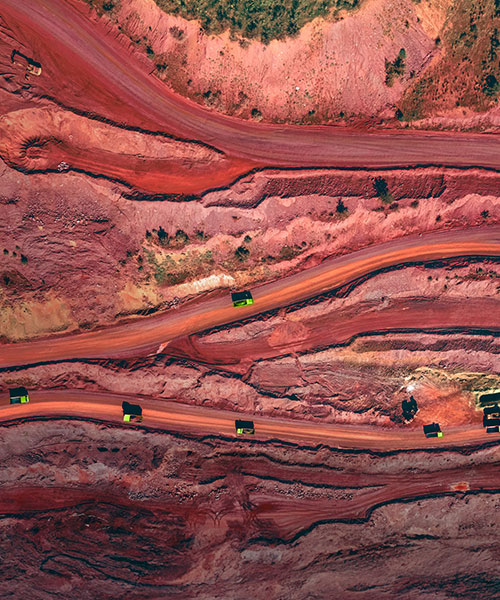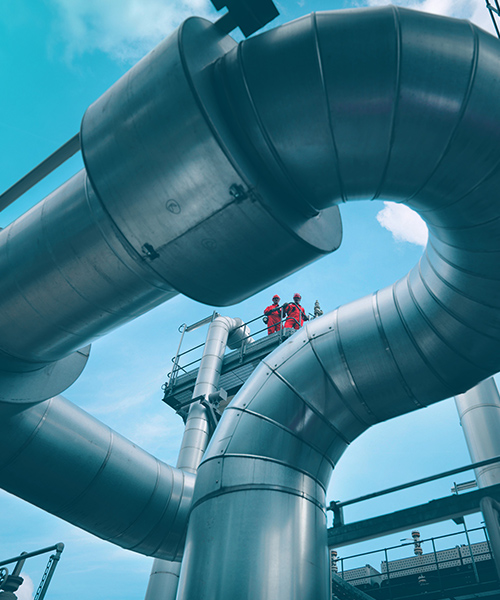May 17, 2020 • 6 min read
The future of mining: Opportunities in the energy transition and digital
The movement towards low emissions technologies depends on the mining industry to provide the materials required
“We require a different mineral mix to expand electrification and energy storage,” says Simon Yacoub, Vice President, Resources – Americas. “We’re witnessing considerable shifts in demand for new energy materials, to expand production of lower carbon technologies. And also for applications that we can’t even foresee yet.
“The minerals of the low emissions future include lithium, iron ore, manganese, aluminium, nickel, lead and graphite. But the single most important mineral that will enable electrification and electron mobility is copper. Copper is critical for electric vehicles, energy transmission and storage, and renewable energy technologies that harness the sun and the wind.
“Every sustainable development scenario depends on these minerals. And the mining industry is unique in that the responsibility rests on us to supply them responsibly.”
Improving social license across the mining industry
“We need to consider less energy intensive ways of extracting and processing minerals,” says Yacoub. “And to power these processes with energy that comes from renewable sources. This is where expectations around social license come into play. These are powerful levers that are important to our customers and hence, to us.
“Our customers have a growing demand for our new energy expertise to establish affordable, reliable power to these mine sites with technology at the forefront of the power sector. Technology is the biggest enabler to make the energy transition a commercially viable pathway. It's also a key ingredient in developing remote regional areas that are adjacent to mining provinces.
“It’s exciting to shape a future where decentralized energy supply enables the growth of new economic regions.”
Embracing the uncertainties of digital transformation
Evan Boyle, Senior Director, Technology Solutions, details the current state of the digital transformation in mining.
“Investment hasn’t always backed up the excitement about digital. It’s the adage of you don’t know what you don’t know. While it pays off in the long term, innovation is time consuming and requires change. So quantifying investment cost is hard and returns are slow.
“That has created some hesitation to make big decisions in case the wrong path or tool is selected. This encourages delays and endless testing of the market, which limits collaboration or investment in digital and data centric approaches.”
However, there is little choice but to go for it. Boyle offers a glimpse of where the opportunities lie.
“Technology is already at the stage where we can tap into a virtual world and use digital twinning to build and view an end result. New parts or facilities can be incorporated into the existing world to view, test and optimize the blend of components. As well as the processes and systems used to create and operate the facility. You can envisage this before even committing to the development of a project.
“This technology can help make better investment and operating decisions and improve process controls prior to final investment decision (FID). But we must be accustomed to investing in the technology upfront,” says Boyle.
This means the probable outcomes of embracing technology and predicting a balanced, safe, net zero future, can be debated as part of the FID.
“Once a facility is up and running, technology also enables you to monitor its operation, make informed decisions with real-time data and allow many tasks to be performed directly by the control system, improving its own performance over time with machine learning,” continues Boyle.
“The assessment speed and response time helps you to keep on track, adjust performance outputs and avoid failures, all of which can contribute to a safer, more sustainable outcome. But it needs to be incorporated in the design phase, requiring substantial collaboration with the end user.
“These technologies also offer rational, algorithmic responses, based on many data points. This means responses are better informed, faster and ultimately safer than traditional human or manual intervention.”
Technology advancements that are shaping the future for mining
Where there is uncertainty, there is opportunity.
“The energy transition can’t happen at the speed we need it to unless we embrace better technologies to design and run mines. At the same time, the need to improve overall sustainability and the social license to operate remains paramount,” says Boyle.
“Technologies can assist mining companies to assess, track, collate and present the complex mix of elements that contribute to any sort of environmental or energy goal. Knowing what you’ve achieved is almost as powerful as achieving it. A data centric solution is key to making the right decisions towards achieving a net zero impact.”
Technologies that aid productivity can have a similarly large impact on the energy transition.
“One example is the successful implementation of digital tools such as NextOre mineral sensing technology that helps pinpoint the highest grade material from a conveyor belt or truck and provide real time grade readings in seconds,” explains Boyle.
“Using technology to better analyze ore bodies will minimize the removal, transport or processing of unusable or low grade ore, which in turn provides consistency of grade for processing. That means our customers can run fewer diesel trucks and consistently improve the ore grade, resulting in energy savings, potential process improvements and the overall reduction of their carbon footprint.
“The opportunities for technological advances in a mining setting are endless. We can now use virtual reality for site training, 3D printing for spare parts manufacturing, predictive analytics platforms to manage safety and conduct aerial inspections of mine sites using drones. These are just some examples of digital mining processes which are enabling us to optimize mine operations.”
This equates to increased safety, productivity and less CO2 emissions, and assists the sector to do its bit to reach the targets of the Paris Agreement and decarbonize mining process.
Yacoub summarizes the interdependence of mining and technology in a decarbonizing world.
“Technology is the single biggest enabler of any kind of future that embraces the energy transition. Mining techniques need to go through a revolution very quickly, but it’s heartening to see the early stages of that today.
“I’m sure we’ll look back at what we’re doing now as baby steps. But right now, they are quantum leaps.”



